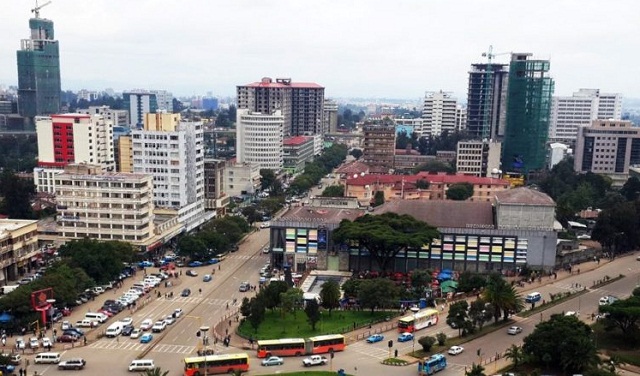
Addis Ababa, Ethiopia | AFP | From its hillside overlooking the Ethiopian capital, Berhanu Mengistu’s century-old, gabled family home has seen emperors and governments rise and fall.
It has withstood economic stagnation and the rapid population growth that replaced its once-patrician neighbours with a rabble of shacks.
But it now stands lonely in a field of weeds, the house’s corrugated roof and red plaster walls stark against a fast-changing cityscape of cleared slums, tower cranes and glinting high rises.
Palatial homes like Berhanu’s are scattered throughout Addis Ababa, built for imperial-era courtiers and foreign business moguls, but most have slid into dire neglect as the government focuses on an aspirational building boom.
“Nowadays, most of the buildings you see are more of the European architecture,” said Berhanu, a supply chain manager whose house has been in his family for seven generations.
Across the capital, older, poorer neighbourhoods — like the one that once surrounded Berhanu’s home — have been levelled to make way for glass-and-concrete towers, lauded by the government as a symbol of the rapid economic expansion transforming one of Africa’s poorest countries.
But preservationists worry that the breakneck development comes at the cost of the capital’s architectural heritage.
“There are isolated efforts of protecting, saving historic buildings, but it’s really very limited,” said Fasil Giorghis, a well-known architect.
“It is not even a given that you should protect a historic building.”
– A young city –
Addis Ababa was founded in the late 19th century by Emperor Menelik II as he expanded the Ethiopian empire from the country’s northern highlands to its modern boundaries.
The young city soon filled with houses belonging to members of Menelik’s government, among them Berhanu’s ancestor Yemtu Beznash, the family matriarch and administrator of a powerful law court.
Menelik, who died in 1913, also hired Armenians as city engineers, while merchants came from India and Yemen.
That cosmopolitanism was upended in 1974 with the arrival of the Derg military junta, which dismantled the Ethiopian empire.
Fasil recounted how, as foreign traders fled, the communist-leaning Derg handed their former mansions to poor tenants, who could not afford to maintain the earthen walls and wooden floors.
– ‘Ideological shift’ –
The Ethiopian People’s Revolutionary Democratic Front (EPRDF), which evicted the Derg in 1991 and continues to rule today, has presided over an economic boom.
This has seen contractors from China and elsewhere set to work on half-built skyscrapers that give the capital’s skyline a jagged, unfinished feel.
Maheder Gebremedhin, an architect who hosts a radio show discussing the trade, says the neglect of the old buildings is due to the cost and complexity of renovation, as well as a lingering ambivalence towards the imperial past.
“Because of the ideological shift, there is not a real interest to keep these buildings,” Maheder said.
 The Independent Uganda: You get the Truth we Pay the Price
The Independent Uganda: You get the Truth we Pay the Price



